Ever wondered why humans haven’t journeyed to the centre of the Earth before? Well it isn’t for lack of trying.
The deepest man has ever gotten in its journey to dig through our planet is the Kola Superdeep Borehole in Murmansk, Russia which reached its maximum depth of 12.2 kilometres (40,230 ft) deep in 1989.
The project was another extension of the ongoing race between America and the former USSR to prove their might as the world’s dominant superpower, which they decided could be measured in spaceflight, nuclear warfare and hole digging.
It would take the Soviets around 20 years to drill this far into the planet before the project was ultimately abandoned.
.webp)
All that remains of the world’s deepest hole (Rakot13/Wikimedia Commons / CC BY-SA 3.0)
Turns out it’s a lot more complicated than grabbing your shovel, or an industrial drill if you just happen to have one lying around, and digging.
Take a moment to recall your primary school science lessons and you’ll remember that our planet is made up of a variety of layers starting at the crust (which is the layer we live on) and going down into the mantle, outer core and finally the inner core.
To add some further context to the depth of the Earth, the Kola Borehole didn’t even make it through the crust, with YouTuber science communicator Cleo Abram revealing in a recent explainer video that this hole was just 0.2 percent of the way to the centre. Which means we’ve still got a very long way to go.
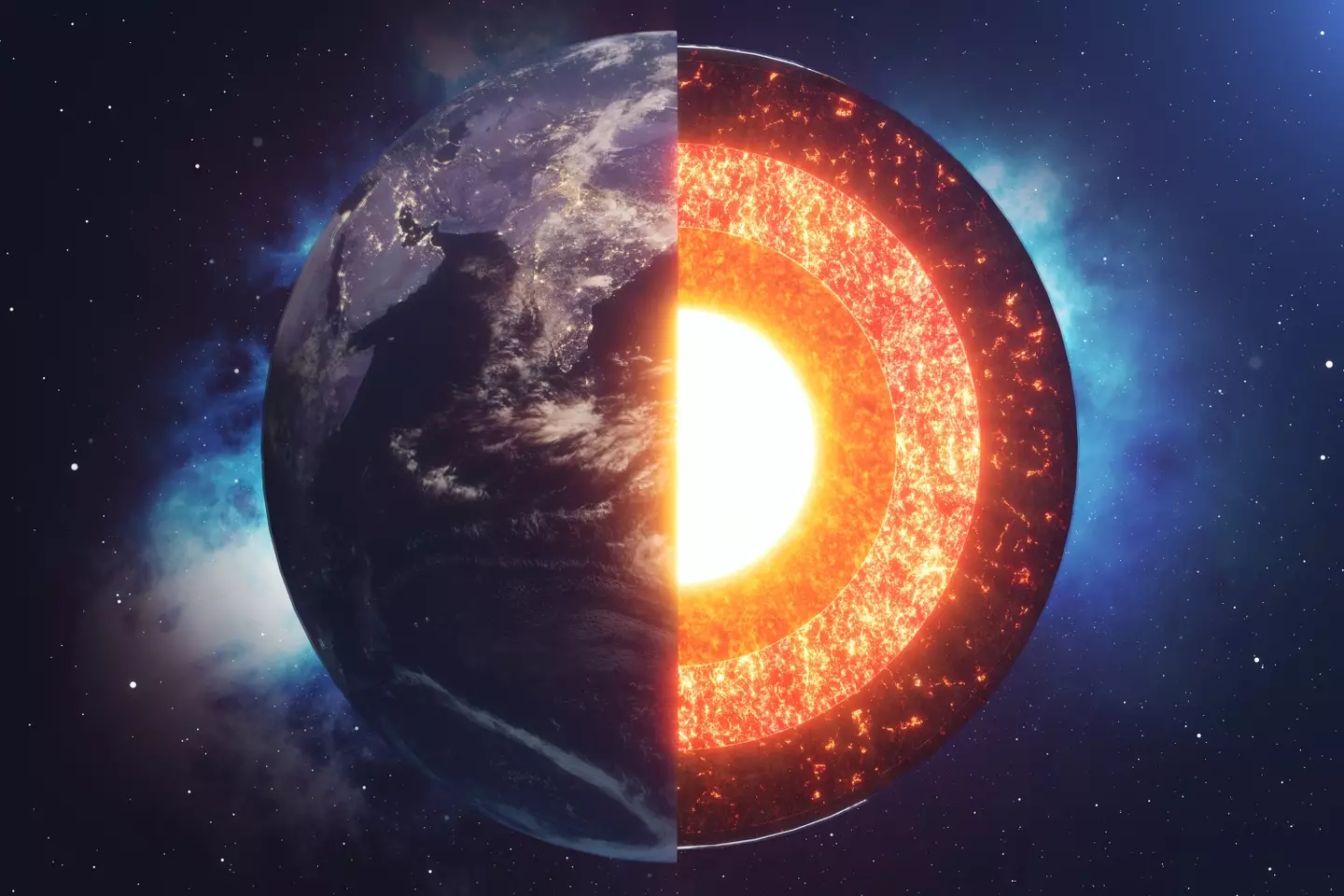
An interpretation of what inside the Earth looks like (Getty Stock Images)
Temperature is a major reason why digging to the centre of the Earth is harder than just drilling, with National Geographic stating that the inner core is around 5,200°C. In order to successfully get a drill through this screaming ball of hell scientists would also need to create a piece of technology which could withstand this heat.
Pressure is another factor making digging a hole to the centre of our planet difficult, with any tool used needing to be able to withstand the weight of ‘6.6 sextillion tons of rock’ pressing inward (via HowStuffWorks).
In Abram’s video she explains what would happen hypothetically if you were able to create a tool which would allow you to reach the centre.
Drill through all 6,371 kilometres of the Earth’s crust and you hit the mantle, which has a gooey consistency due to the combination of high temperatures and pressure.
Make it through all 2,900 kilometres of the mantle and you’ll hit the outer core, with Abram calls a ‘liquid soup of metals’ which reaches 4,400°C. The liquid outer core is also responsible for creating electric currents which, according to Abram, create a magnetic field around the Earth which protects us from deadly cosmic radiation.
Once you hit the inner core things become solid once again, with extremely high amounts of pressure meaning that iron atoms at the centre are simply unable to turn into a liquid.
Create a drill which can withstand all of the above and congratulations, you’ve made it to a place where no man has ever been before.
Featured Image Credit: YouTube/CleoAbram/ Getty Stock Images
Topics: Science, Environment
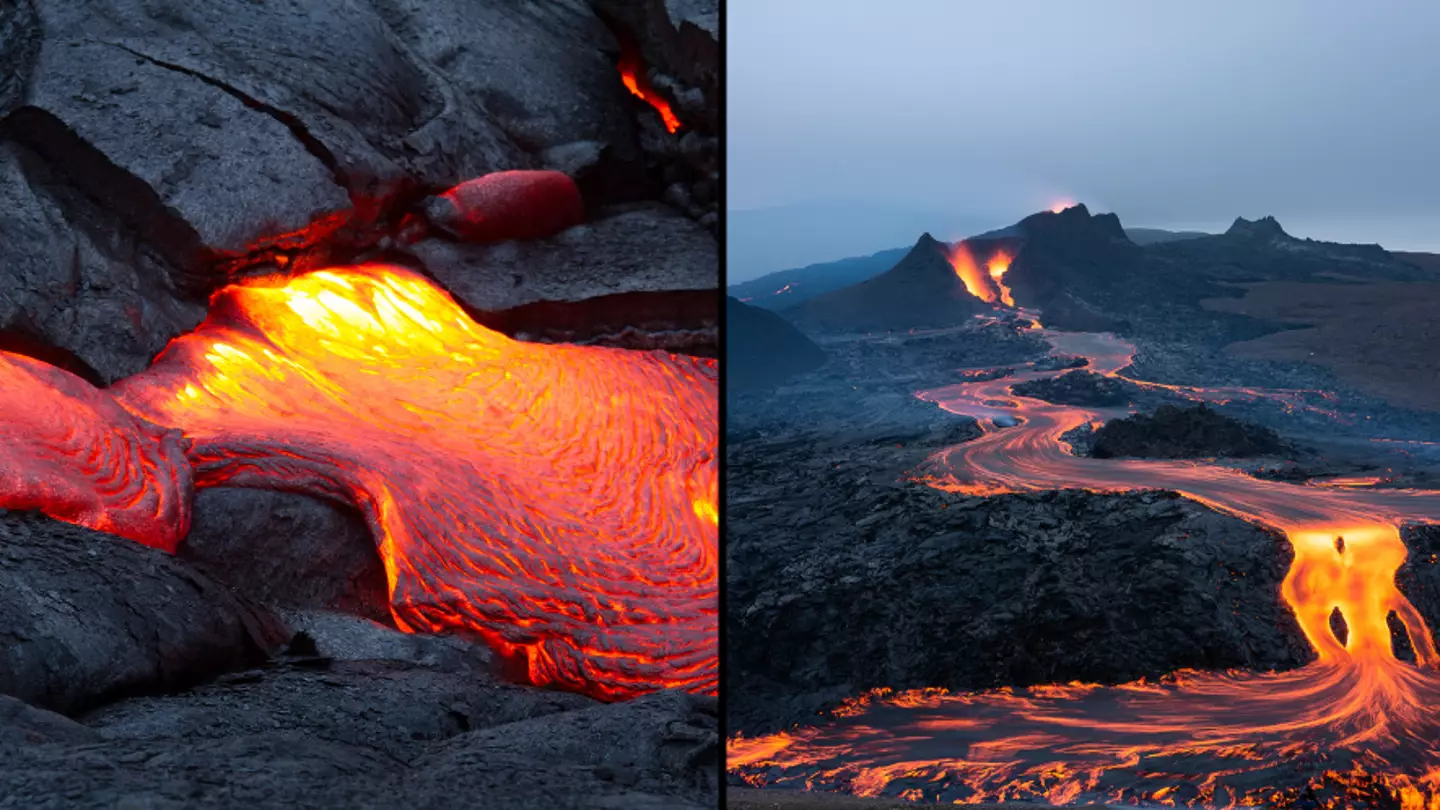
Remember near the end of Lord of the Rings: Return of the King when Gollum falls into the lava and dies?
Of course you do, it’s a great movie and every detail ought to be etched into your mind.
Anyhow, he kind of plops onto the surface of the lava for a couple of seconds before sinking in and that’s the end of him.
But what would happen to you or I if we took a little tumble into some lava?
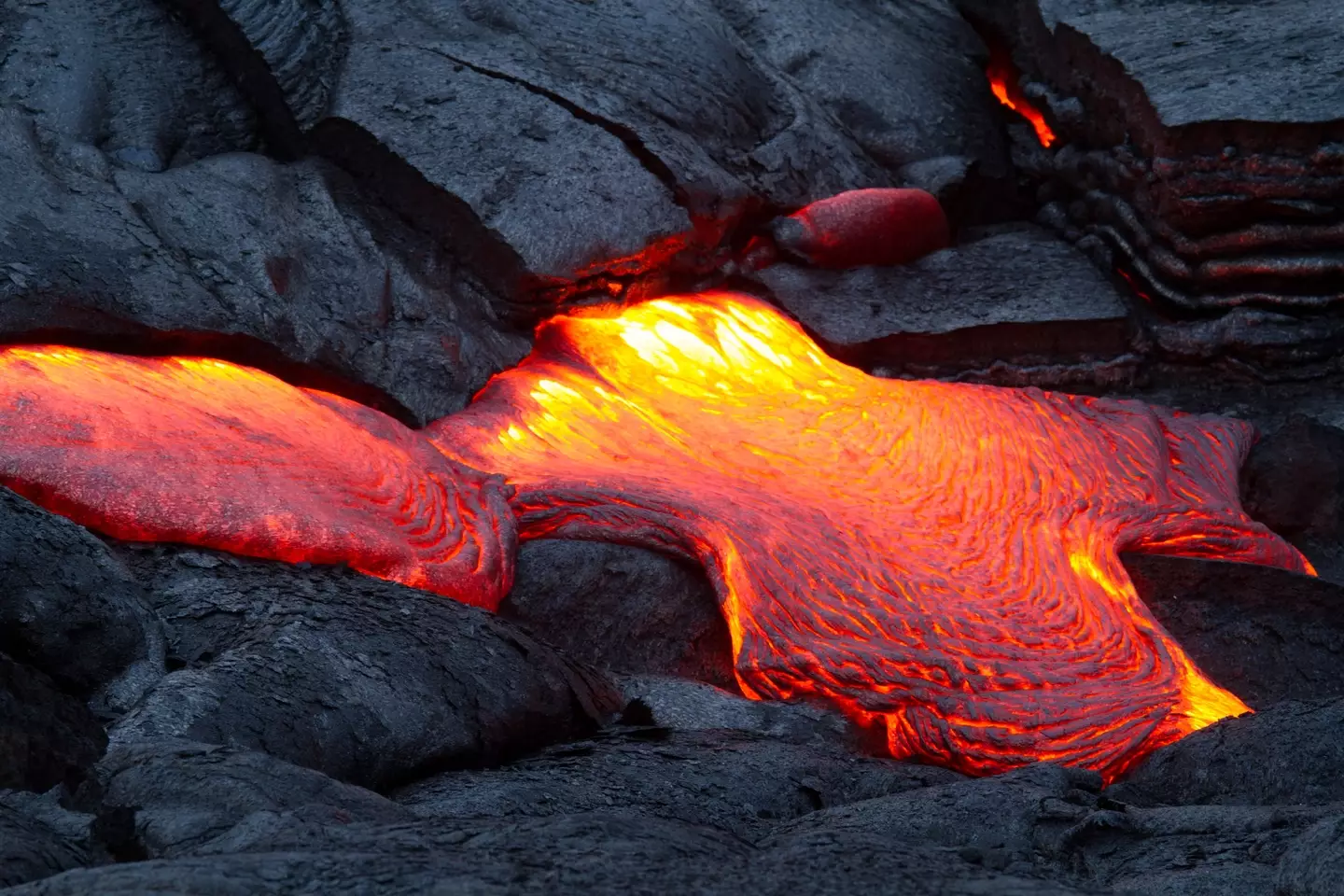
Don’t even think about it. Seriously. (Getty Stock Photo)
The short version is that we would die and it would not be pleasant.
The long version is that the rising heat from the lava would make your skin blister even before you made contact with it, clothing and hair would likely ignite before you even hit the surface.
As for what would then happen to your body when it made impact with lava, volcanologist Adam Kent once told Digg that you would float.
Gollum might have plopped in there and sunk down, but lava is dense enough that sinking down would be difficult.
Once you were bobbing up and down on the world’s most painful river, Kent said that as your body was destroyed it would then explode.
“The basic idea is that the gases in a body would expand rapidly and probably cause a series of minor explosions,” he explained as the gas contained within all of our bodies would expand due to the heat and go boom.
Whatever else remains of you is going to be subjected to such high temperatures that before long there’s not going to be much of anything left of you.
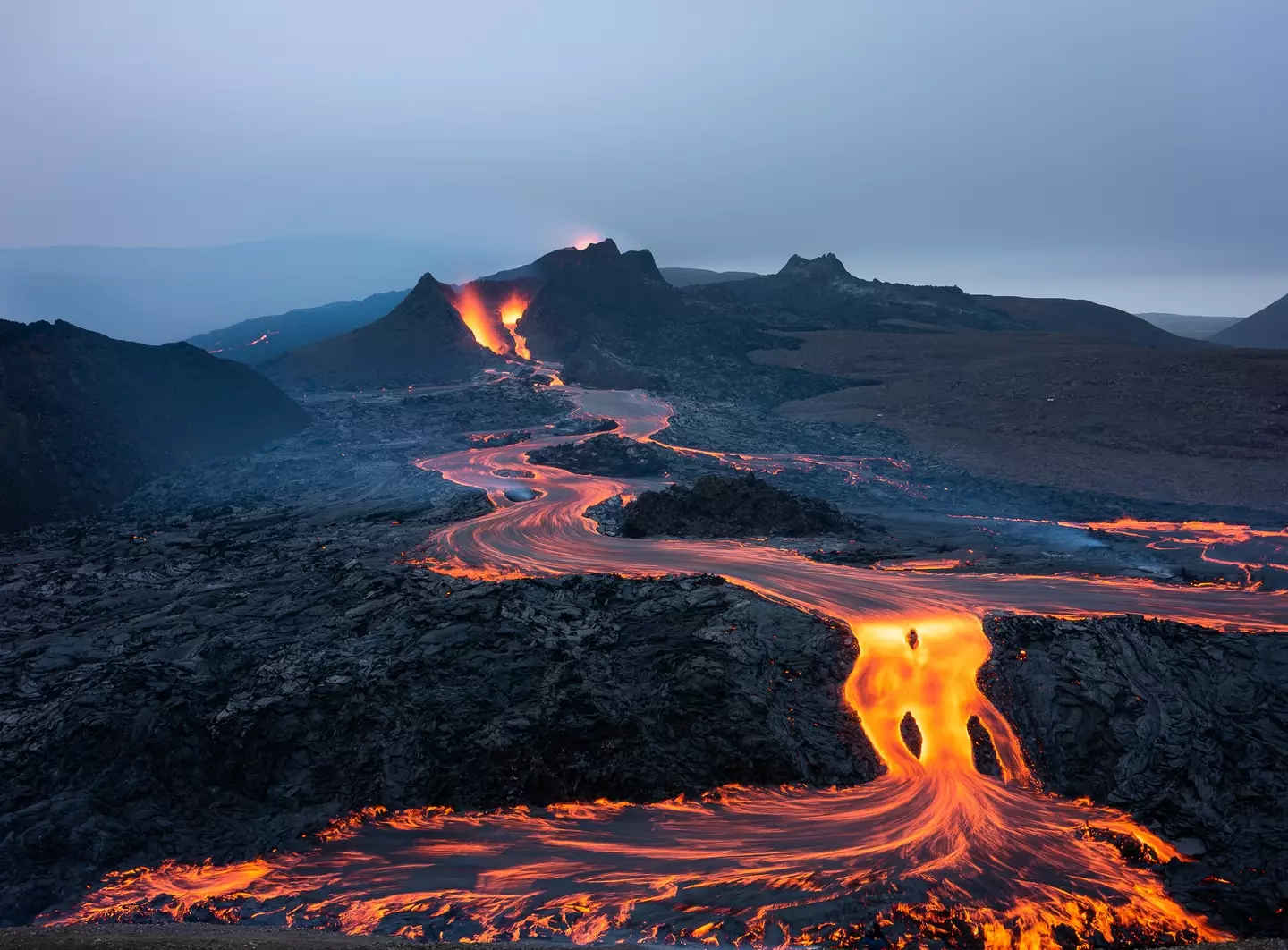
You wouldn’t actually sink, you’d just kind of bob on the surface and explode. Also you’d die. (Getty Stock Photo)
Kent expects that you wouldn’t even be in much of a condition to cry out or move around as the heat is so intense that the water in your body would boil to steam.
He said: “I think that you would be pretty rapidly overcome by heat, both conductive and radiant.
“If you are ever near an active lava flow the radiant heat is crippling at quite some distance from the lava — let alone lying right on top.”
So that’s what would happen to you if you were to fall into some lava, you would die a horribly painful death.
The only possible benefit is that it surely wouldn’t take too long to go, though however long it took would be pretty much the worst time of your life.
Remember that one guy who cooked some bacon and eggs on a volcano? It’d be you that was cooked.
Featured Image Credit: Getty Stock Images
Topics: Science, Weird, Environment, Health
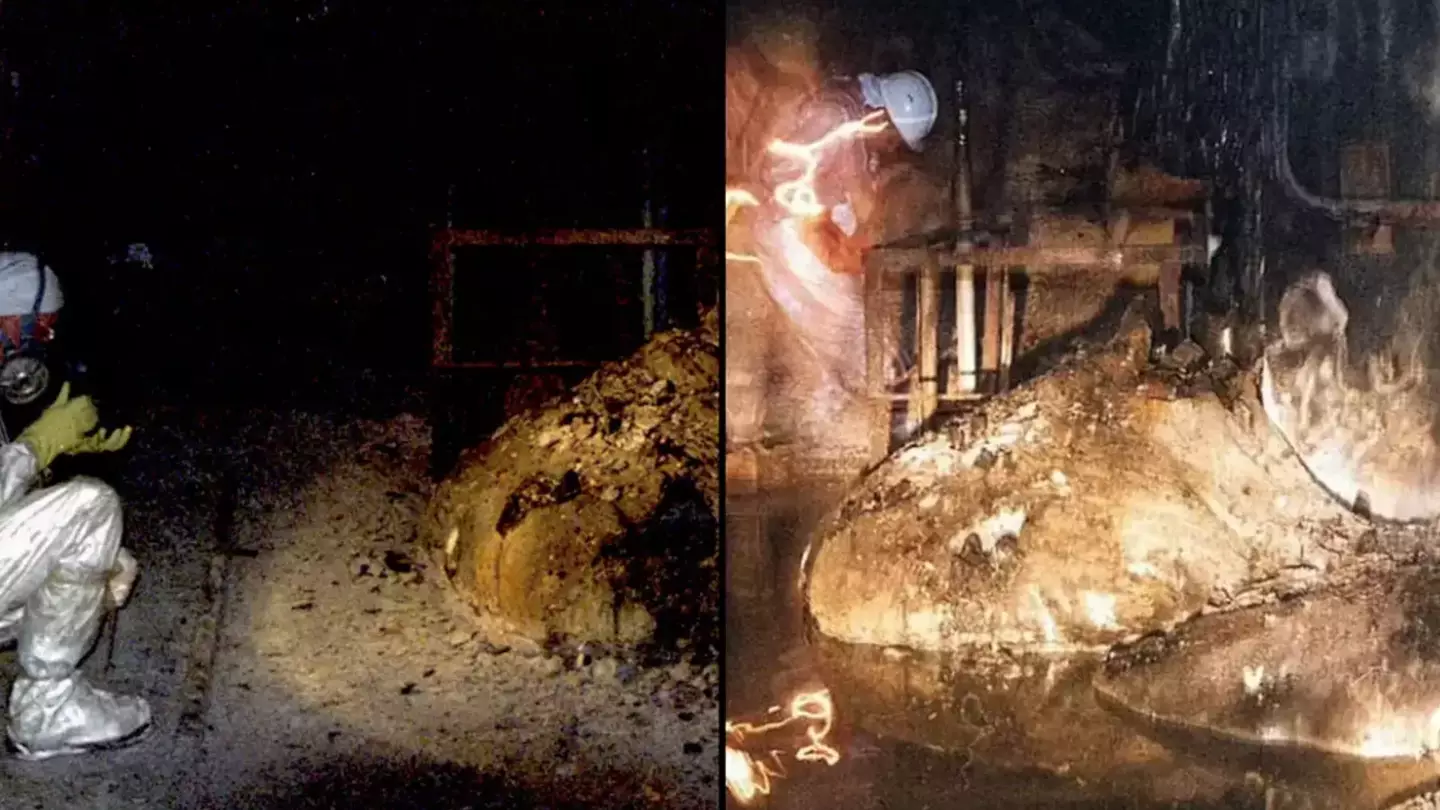
Did you know that spending just five minutes in a room with the world’s most dangerous object is enough to kill you?
You read that right. A mere five minutes. So, it’s safe to say you don’t want to mess around with the appropriately ominous-sounding ‘Elephant’s Foot.’
And, while you might have never heard of it, the object’s location shouldn’t come as too much of a surprise.
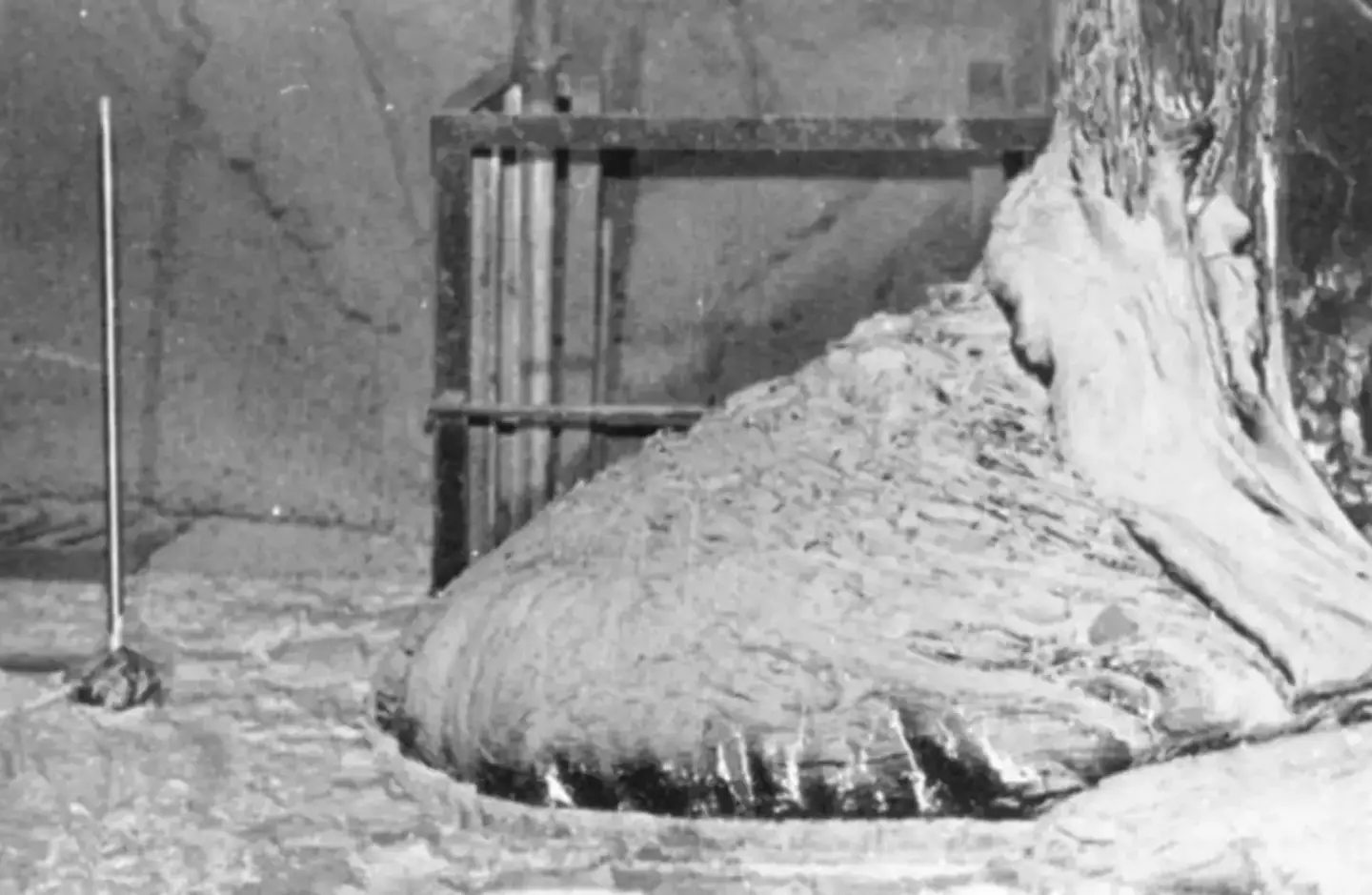
The ‘Elephant’s Foot’ is the most dangerous object in the world (US Department of Energy)
‘Elephant’s Foot’ can be found in a basement in Pripyat, Ukraine – the home of the Chernobyl nuclear disaster in the 1980s.
On 26 April, 1986, a reactor at the Chernobyl nuclear power plant experienced a critical meltdown, resulting in a number of explosions, raging fires and a catastrophic spread of radiation across surrounding areas.
Dozens of people were killed in the direct aftermath of the Chernobyl disaster, with thousands more perishing due to radiation-related causes in the years that followed.
The ‘Elephant’s Foot’ is a big black mass of dangerous waste that remains in the basement below the failed reactor, named so because of its resemblance to the large wrinkled foot of the animal.
When emergency crews fighting the disaster in 1986 made it to the basement, they found black lava that had oozed directly from the core.
Reportedly about one metre in size, it consists of concrete, sand and melted nuclear fuel and weighs around two metric tons.
With the radiation, crews knew not to approach it and, with it still being tipped as the most dangerous object in the world, you’d be smart to follow suit.
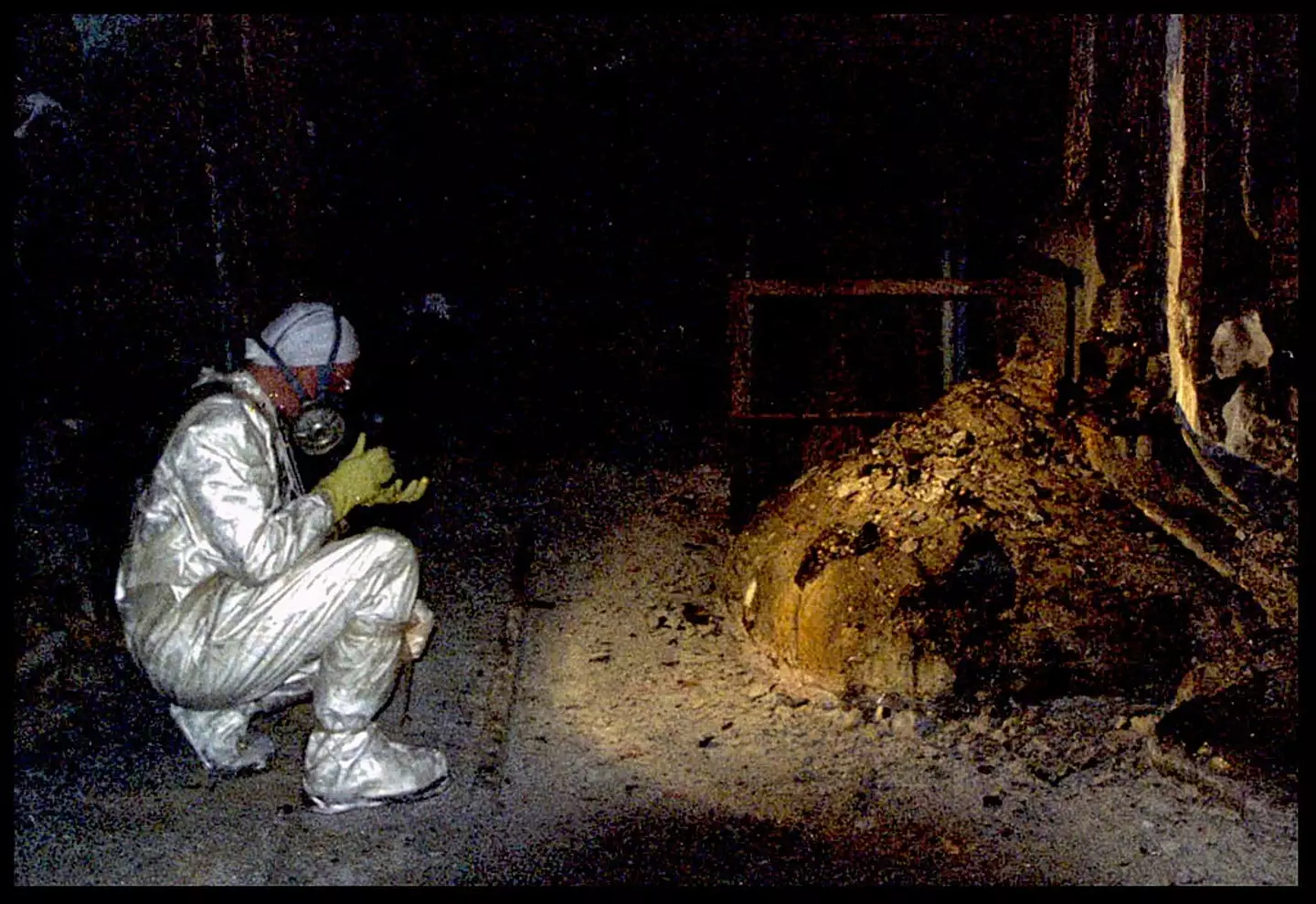
Just five minutes near it can be enough to kill you (Universal History Archive/Universal Images Group via Getty Images)
According to science magazine Nautilus, just 30 seconds of exposure to the thing will hit you with dizziness and fatigue.
Two minutes and your cells will begin to haemorrhage and four minutes in, you’ll have vomiting, diarrhoea and fever.
And, according to readings taken at the time, the molten core emitted so much radiation that if you managed to last just 300 seconds near it, you’d have just two days to live.
Ten years later, it was only emitting one tenth of the radiation it once had.
Still, just 500 seconds of exposure would be enough to bring on radiation sickness and a little over an hour would be lethal.
While the Chernobyl disaster happened more than three decades ago, the ‘Elephant’s Foot’ remains in place melting into the base of the power plant.
And, it’s still so radioactive that it will remain dangerous for tens of thousands of years to come.
Featured Image Credit: Universal History Archive/Universal Images Group via Getty Images
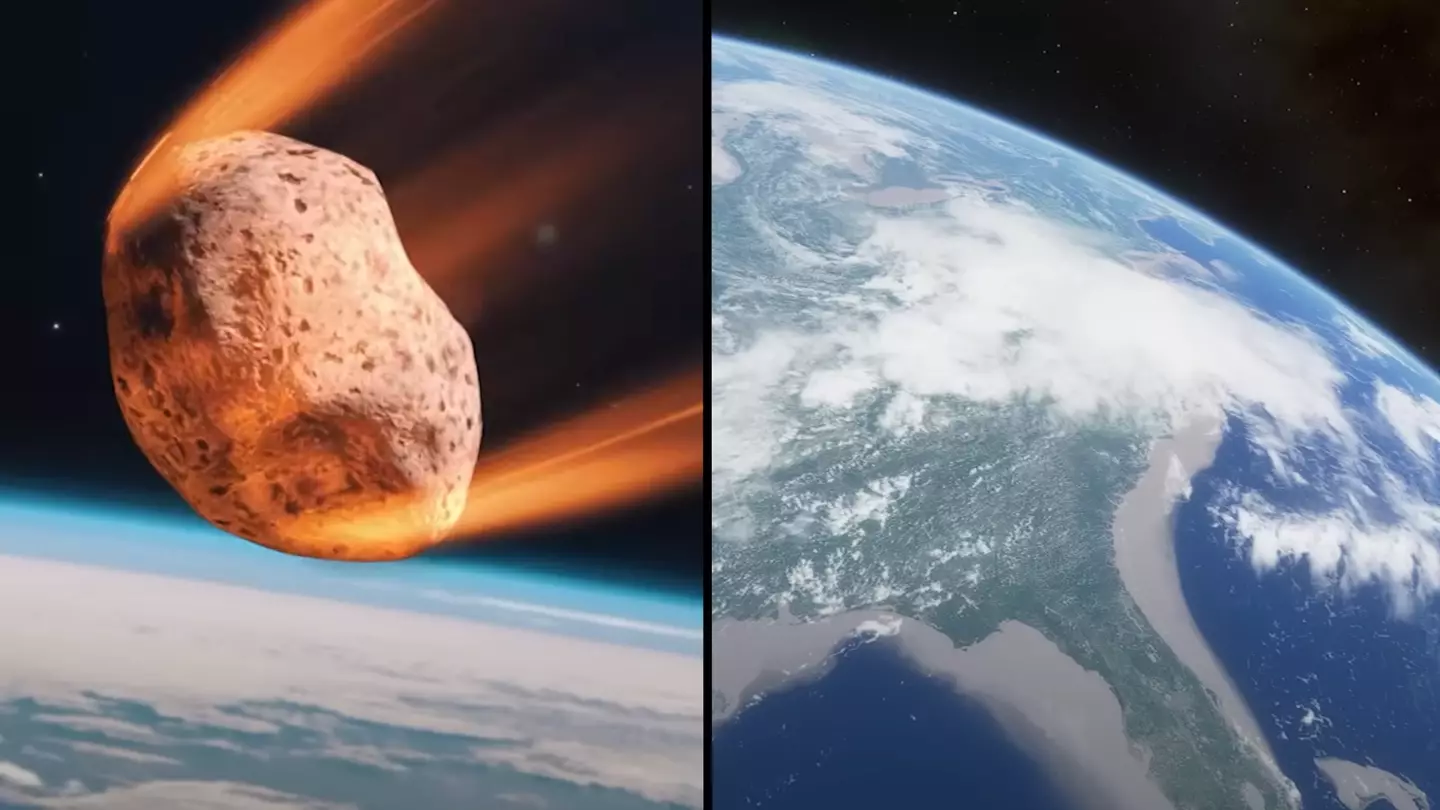
A simulation has revealed what would happen if the Apophis asteroid collided with Earth.
99942 Apophis – also known as the ‘God of Chaos’ – is a peanut-shaped asteroid measuring a whopping 340 metres wide.
On 13 April, 2029, Apophis is set to pass by Earth within an estimated 20,000 miles (32,000 kilometres) of its surface.
It will pass over the Atlantic Ocean, travelling so quickly that it will take less than an hour to cross.
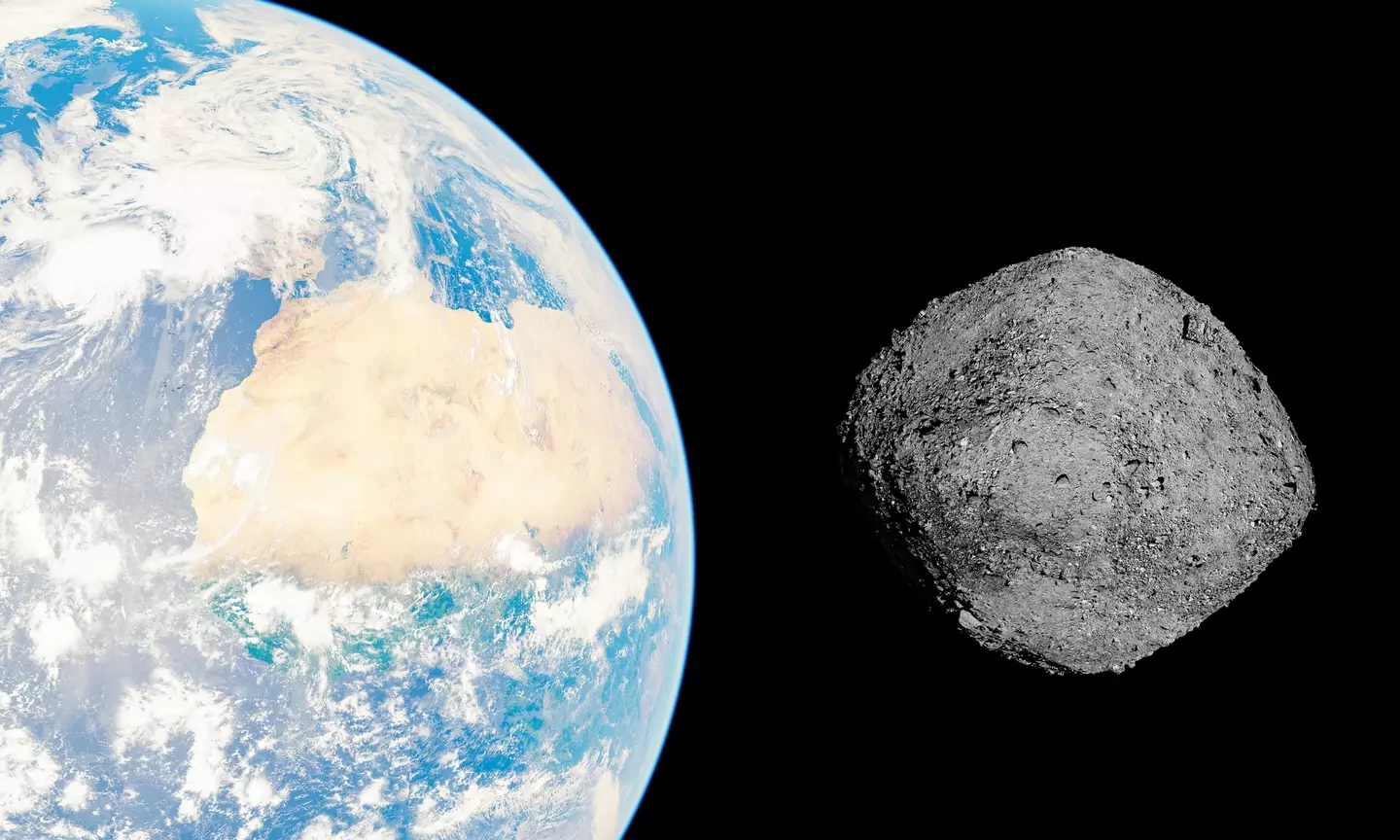
The asteroid is not expected to hit Earth (Getty Stock Image)
Now, it’s important to note that the asteroid isn’t expected to hit Earth, but a recent study has found that another object – which is 0.6 metres in length – could change this, although it’s unlikely.
Canadian astronomer Paul Wiegert and co-author Benjamin Hyatt looked into the odds of the asteroid colliding with another object, which essentially could cause it to hurtle towards our planet.
The study, published in The Planetary Science, found that the object could be enough to throw the asteroid off course, if it reached 3.4 metres in size.
And if this happens, it could collide with our planet at a later date.
Fortunately for us, the scientists say that the odds of this happening are ‘exceptionally low’ at around 2.7 percent.
But what would happen if the asteroid did end up colliding with our planet?
How bad would it be?
Well, according to digital platform Cosmoknowledge, although Apophis wouldn’t be ‘a planet killer’ it ‘would ruin our day if it made contact’.
A simulation reveals that if it was to hit Earth, it would impact the planet with a kinetic energy equivalent to ‘1,000 mega tonnes of TNT, or tens to hundreds of nuclear weapons’.
It would not cause a threat to humanity as a whole, but it would cause ‘billions’ of deaths, as well as severe climate disruption.
“We would have to get out of the way if we could not stop it or change its trajectory,” they explain.
“A project of that magnitude would necessitate global cooperation as millions of people would become the first space refugees.
“Depending on the size, density, speed and angle of approach of the asteroid, such an evacuation may not be possible.”
NASA has weighed in on the potential event following investigations into the asteroid last year.
In a statement, the space agency said: “The intrigue of Apophis is its exceptionally close approach of our planet on April 13, 2029.
“Although Apophis will not hit Earth during this encounter or in the foreseeable future, the pass in 2029 will bring the asteroid within 20,000 miles (32,000 kilometres) of the surface – closer than some satellites, and close enough that it could be visible to the naked eye in the Eastern Hemisphere.
“Scientists estimate that asteroids of Apophis’ size, about 367 yards across (about 340 metres), come this close to Earth only once every 7,500 years.”
Featured Image Credit: YouTube/Cosmoknowledge
Topics: Science, Space, World News
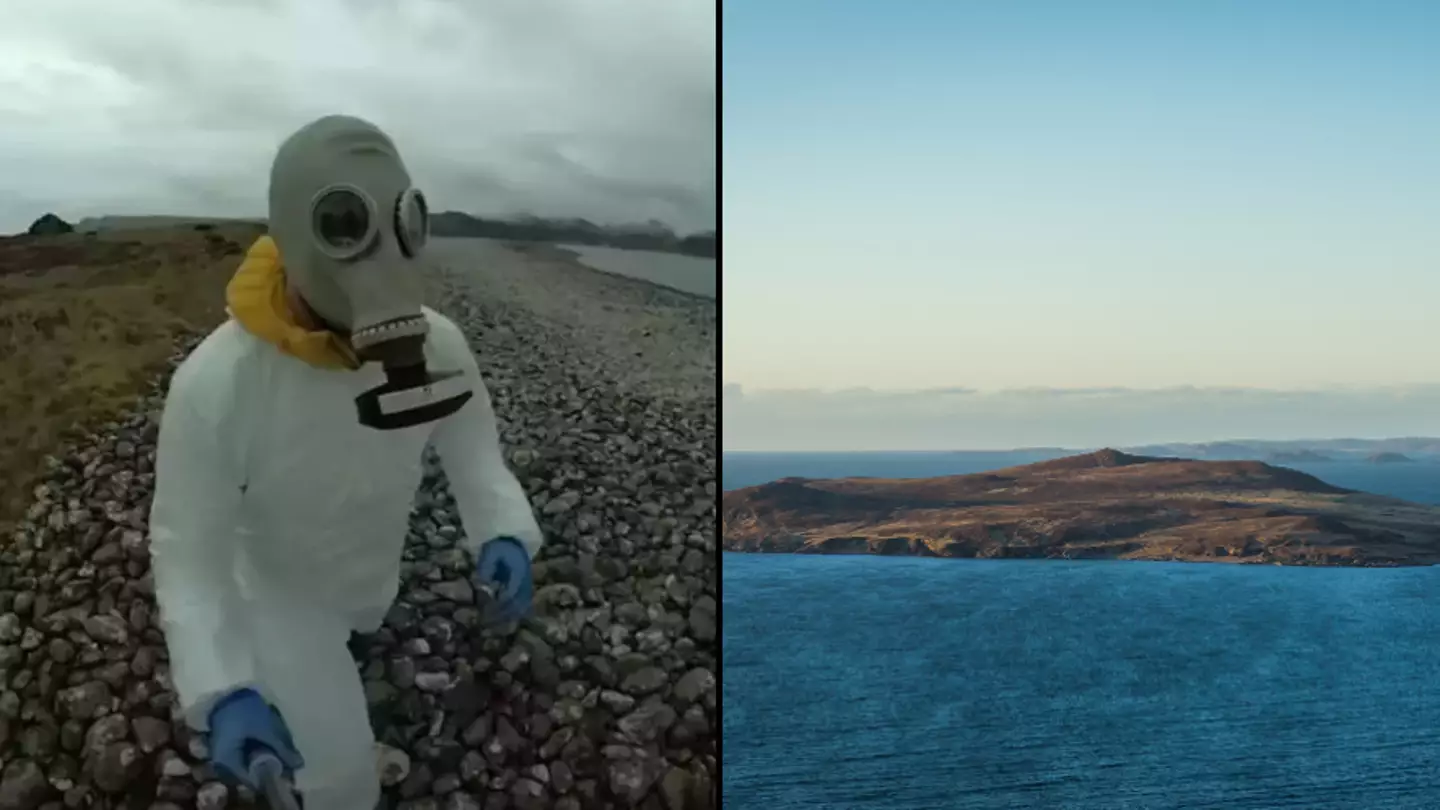
An island once dubbed the ‘world’s deadliest’ was closed to the public for nearly 50 years.
When you think of the Scottish Highlands, images of mountains, freezing temperatures, and deep, mysterious lochs typically comes to mind.
But what about anthrax?
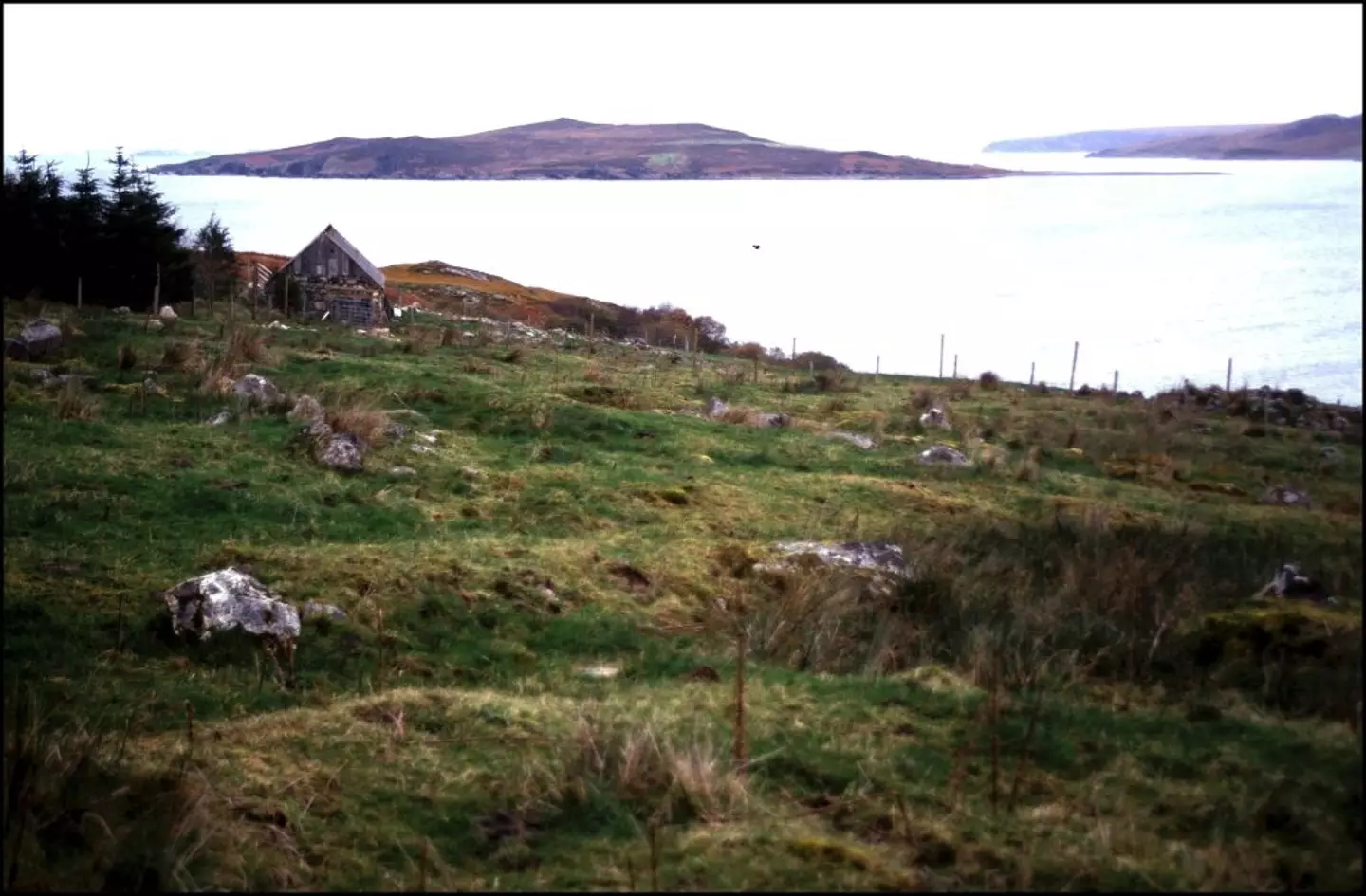
Gruinard Island is located off the Scottish Highlands (Chip HIRES/Gamma-Rapho via Getty Images)
Why was Gruinard Island banned to the public?
Located close to a bay near Gairlock and Ullapool, Gruinard Island appears pretty unimportant at first glance. However, it was once a key World War II test site, which left it contaminated with a deadly virus for nearly five decades.
In 1942, scientists set off anthrax spore bombs as part of ‘Operation Vegetarian’, to test whether or not the bacteria could be weaponised in their offensive against Germany.
The operation saw the military purchase the remote island and ban locals from visiting. Sheep were then used as test subjects for the subsequent anthrax explosion, with all of the livestock ultimately becoming contaminated and dying.
“Eighty-odd sheep were tethered at various stages downwind of the likely explosion,” University of Leeds professor later Edward Spiers explained in the 2022 documentary ‘The Mystery of Anthrax Island’.
“It isn’t a great bang, a draught of highly potent spores moving down on the wind and causing infection and death wherever it goes.”
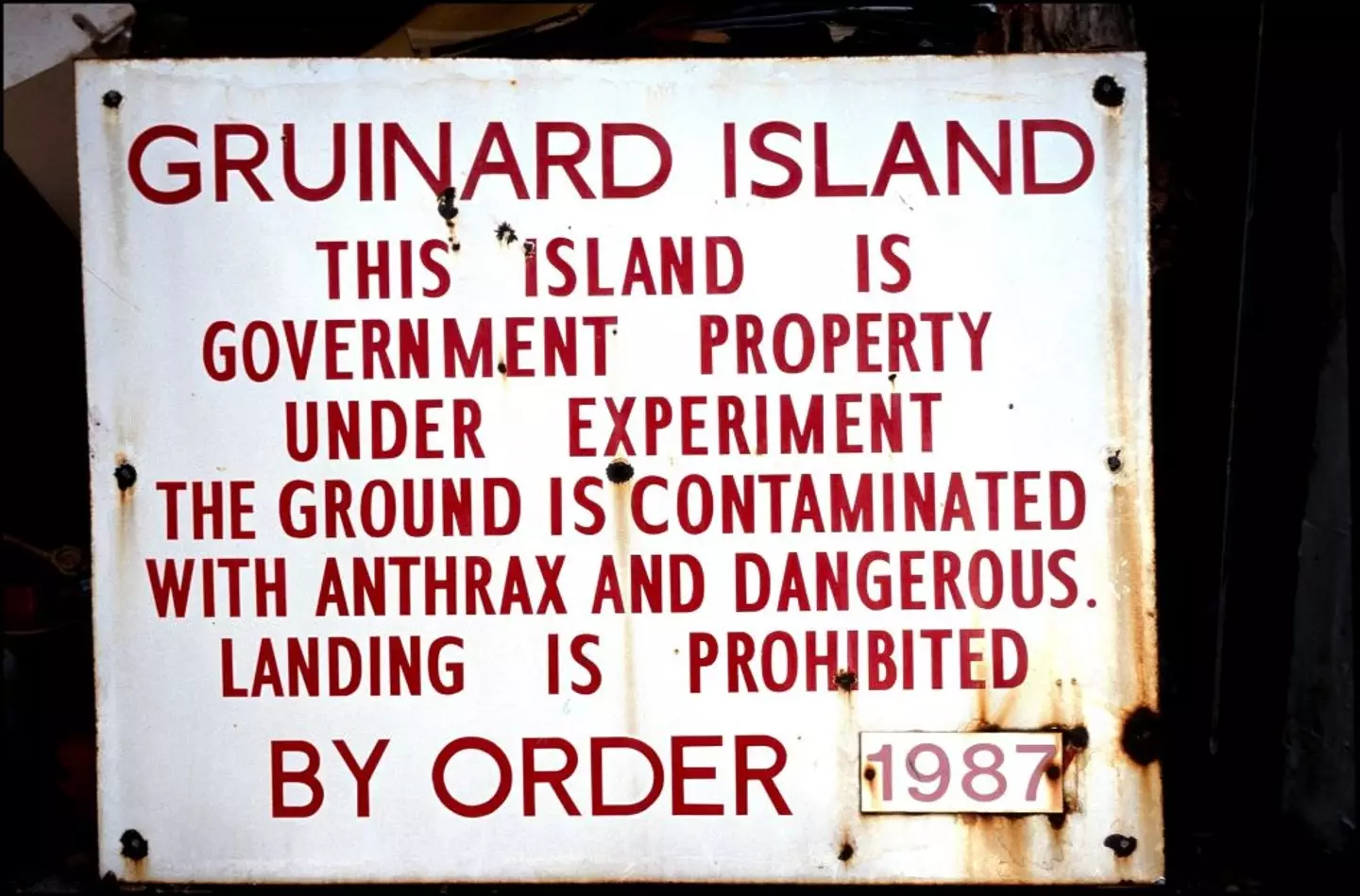
A sign warning people away from Gruinard Island (Chip HIRES/Gamma-Rapho via Getty Images)
Anthrax spores never ended up being used in weapons. However, enough damage was done to the island, and in 1945, the Ministry of Supply took responsibility of the island and judged it to be ‘too hazardous’.
The research would remain a secret by the UK government until the 1980s when ‘Operation Dark Harvest’ demanded the island be decontaminated, thus bringing the situation into public knowledge. It wouldn’t be until 1997 when the full details came to light, when a declassified military film was released into the public domain.
Has Gruinard Island since been decontaminated?
The actions of the Dark Harvest Commandos saw the UK government try again to decontaminate the island, this time by soaking the island in a mixture of seawater and formaldehyde while the worst affected soil was removed an incinerated.
A flock of sheep would later be placed on the island after the clean-up in 1987, and they remained healthy – leading the government to declare the island anthrax-free and remove warning signs deterring people from visiting in 1990.
In 2022, the entire island would catch fire, with eye-witnesses calling the scene ‘apocalyptic’ and like a ‘hell fire’ at the time.
_.webp)
YouTuber Dara Tah visited the island in 2023 (YouTube/DaraTah)
Has anyone visited Gruinard Island since?
The island would become the subject of renewed curiosity in 2023, when YouTuber Dara Tah decided to stay overnight on Gruinard and remove some of the soil for anthrax testing.
Despite the island’s contamination-free status, Tah and friend Matt James donned hazmat suits for the video to be on the safe side.
Fortunately, the samples the pair took from the island came back anthrax-free, which means its safe to visit – if you want to.
